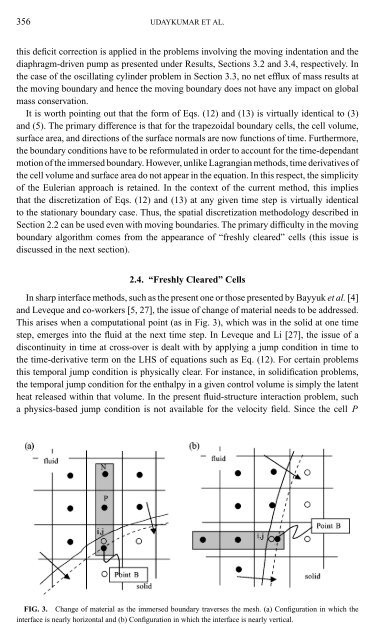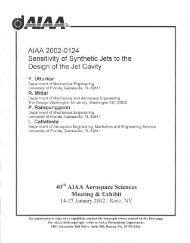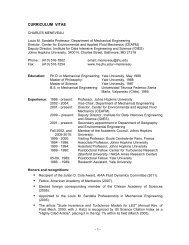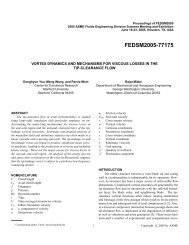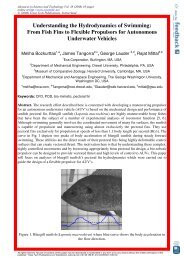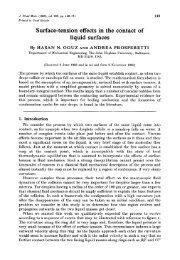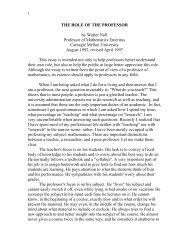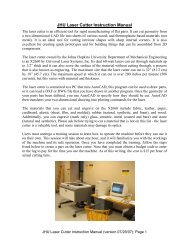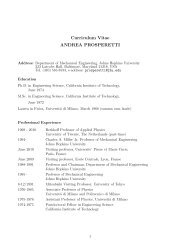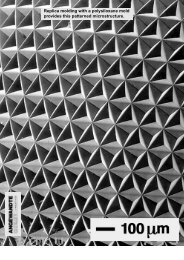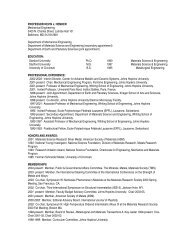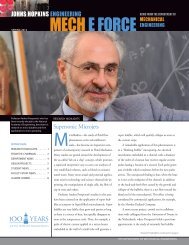A Sharp Interface Cartesian Grid Method for Simulating Flows with ...
A Sharp Interface Cartesian Grid Method for Simulating Flows with ...
A Sharp Interface Cartesian Grid Method for Simulating Flows with ...
Create successful ePaper yourself
Turn your PDF publications into a flip-book with our unique Google optimized e-Paper software.
356 UDAYKUMAR ET AL.<br />
this deficit correction is applied in the problems involving the moving indentation and the<br />
diaphragm-driven pump as presented under Results, Sections 3.2 and 3.4, respectively. In<br />
the case of the oscillating cylinder problem in Section 3.3, no net efflux of mass results at<br />
the moving boundary and hence the moving boundary does not have any impact on global<br />
mass conservation.<br />
It is worth pointing out that the <strong>for</strong>m of Eqs. (12) and (13) is virtually identical to (3)<br />
and (5). The primary difference is that <strong>for</strong> the trapezoidal boundary cells, the cell volume,<br />
surface area, and directions of the surface normals are now functions of time. Furthermore,<br />
the boundary conditions have to be re<strong>for</strong>mulated in order to account <strong>for</strong> the time-dependant<br />
motion of the immersed boundary. However, unlike Lagrangian methods, time derivatives of<br />
the cell volume and surface area do not appear in the equation. In this respect, the simplicity<br />
of the Eulerian approach is retained. In the context of the current method, this implies<br />
that the discretization of Eqs. (12) and (13) at any given time step is virtually identical<br />
to the stationary boundary case. Thus, the spatial discretization methodology described in<br />
Section 2.2 can be used even <strong>with</strong> moving boundaries. The primary difficulty in the moving<br />
boundary algorithm comes from the appearance of “freshly cleared” cells (this issue is<br />
discussed in the next section).<br />
2.4. “Freshly Cleared” Cells<br />
In sharp interface methods, such as the present one or those presented by Bayyuk et al. [4]<br />
and Leveque and co-workers [5, 27], the issue of change of material needs to be addressed.<br />
This arises when a computational point (as in Fig. 3), which was in the solid at one time<br />
step, emerges into the fluid at the next time step. In Leveque and Li [27], the issue of a<br />
discontinuity in time at cross-over is dealt <strong>with</strong> by applying a jump condition in time to<br />
the time-derivative term on the LHS of equations such as Eq. (12). For certain problems<br />
this temporal jump condition is physically clear. For instance, in solidification problems,<br />
the temporal jump condition <strong>for</strong> the enthalpy in a given control volume is simply the latent<br />
heat released <strong>with</strong>in that volume. In the present fluid-structure interaction problem, such<br />
a physics-based jump condition is not available <strong>for</strong> the velocity field. Since the cell P<br />
FIG. 3. Change of material as the immersed boundary traverses the mesh. (a) Configuration in which the<br />
interface is nearly horizontal and (b) Configuration in which the interface is nearly vertical.


